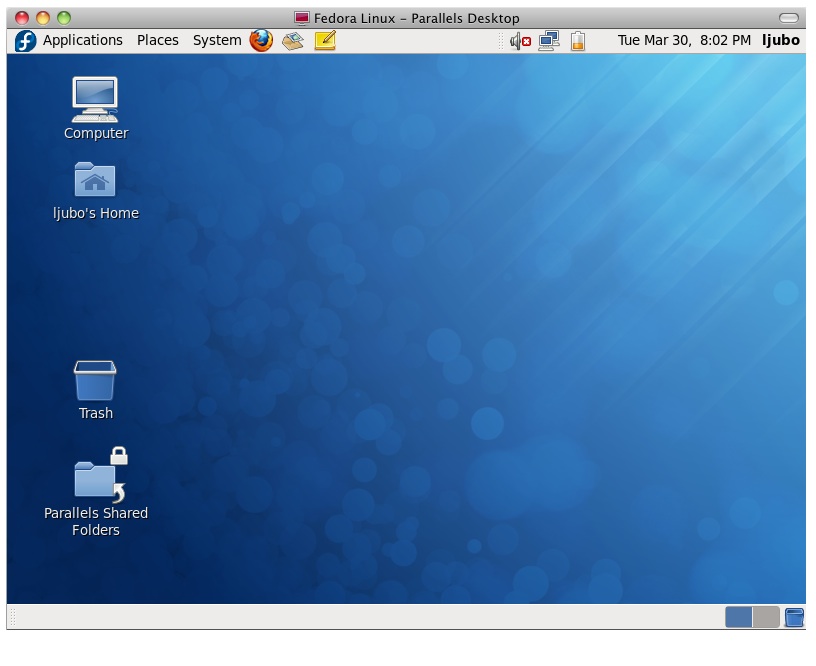Difference between revisions of "Installing Eclipse on Fedora"
(→Before you begin) |
(→Before you begin) |
||
| Line 7: | Line 7: | ||
In this tutorial I started with a fresh install of Fedora 12 running on a Macbook Pro using Parallels Desktop 5. | In this tutorial I started with a fresh install of Fedora 12 running on a Macbook Pro using Parallels Desktop 5. | ||
| − | [[Image:01fedora.jpg|816px| | + | [[Image:01fedora.jpg|816px|center]] |
= Java = | = Java = | ||
Revision as of 20:40, 30 March 2010
Contents
Fedora Linux
Before you begin
The first step is to get Fedora Linux working on your machine. This should be a simple process for most people. I once had a really hard time installing Fedora 11 on an HP laptop (you can the details in my blog) but then I tried Fedora 12 and it worked perfectly right from the install CD.
In this tutorial I started with a fresh install of Fedora 12 running on a Macbook Pro using Parallels Desktop 5.
Java
Getting Java Stuff
Go to System > Administration > Add/Remove Software
Selecting Add/Remove Software will give you the following screen…
I noticed that selecting "All Packages" did not do anything right away. I assume it's because there are so many packages that could be downloaded.
As much as I'd love to get everything and try it all, my goal is to get Eclipse working, so I narrowed my search by typing "java" in the Find field.
There are a lot of packages with the word "Java" in them. I selected a package and "Java"
and another called "Java Development".
I clicked on "Apply" and then the following screen came up.
I clicked on install. A "Downloading packages" message appeared toward the lower left of the screen.
after about 20 minutes the message changed to "Installing packages".
Eclipse
Getting Eclipse
Eventually it was finished. Then (just out of curiosity) I tried to search for Eclipse, and I found a bunch of things…
Again, it's tempting to download everything, but for now I just selected these two.
Once again the "Downloading packages" message appeared.
